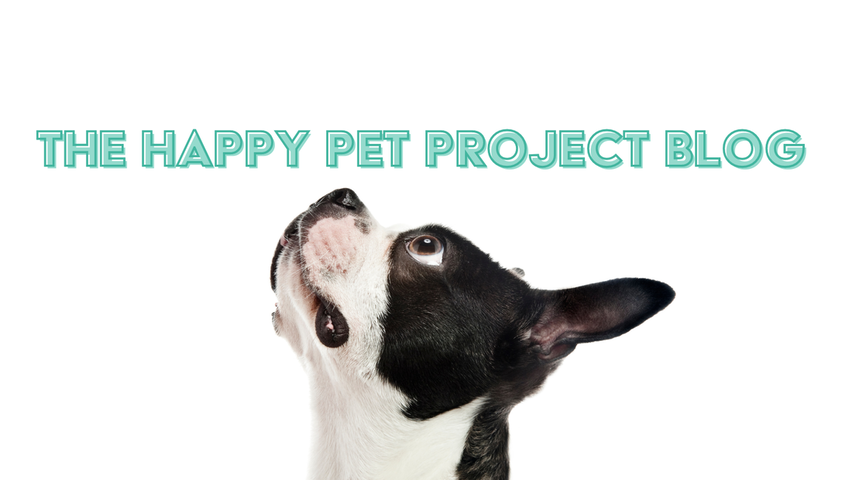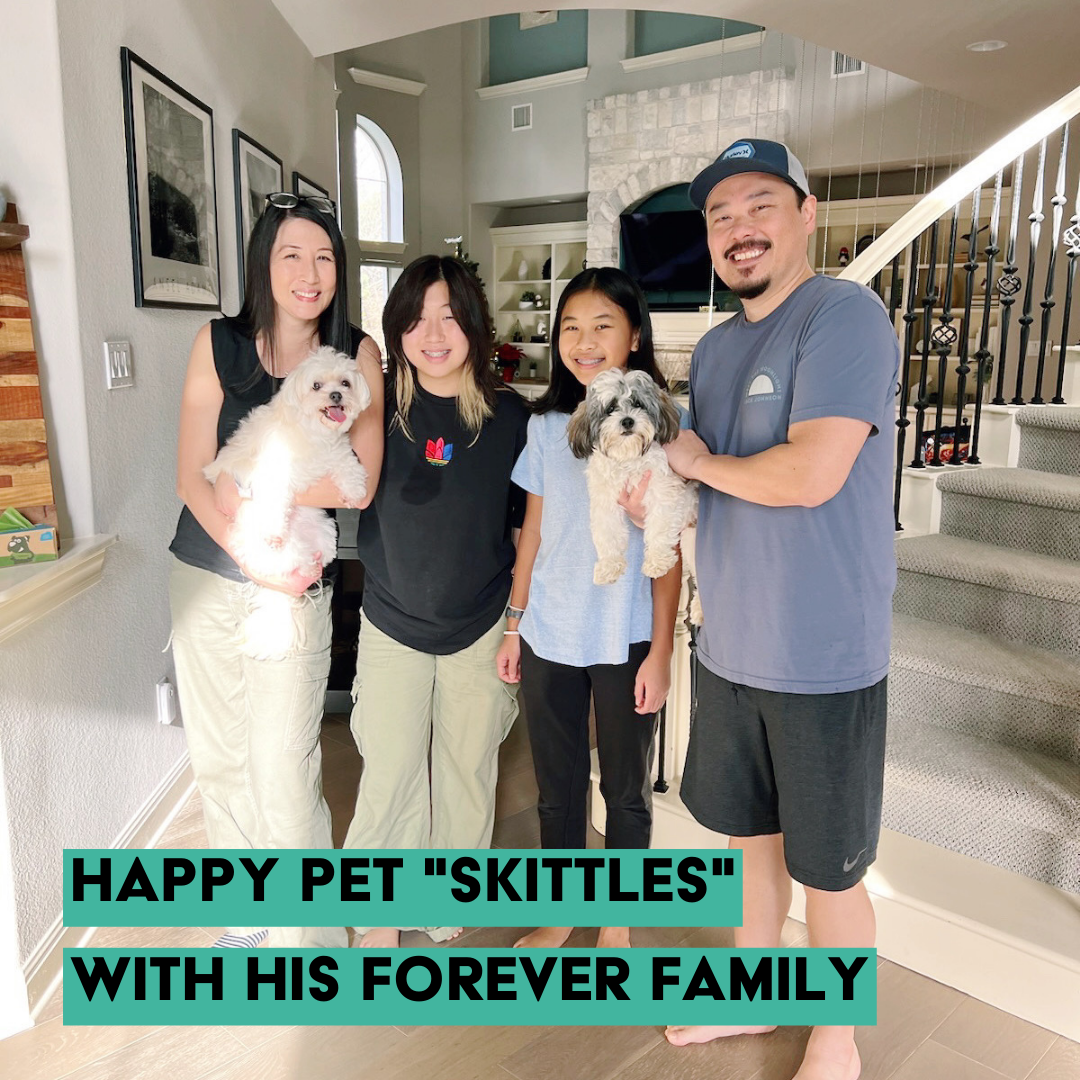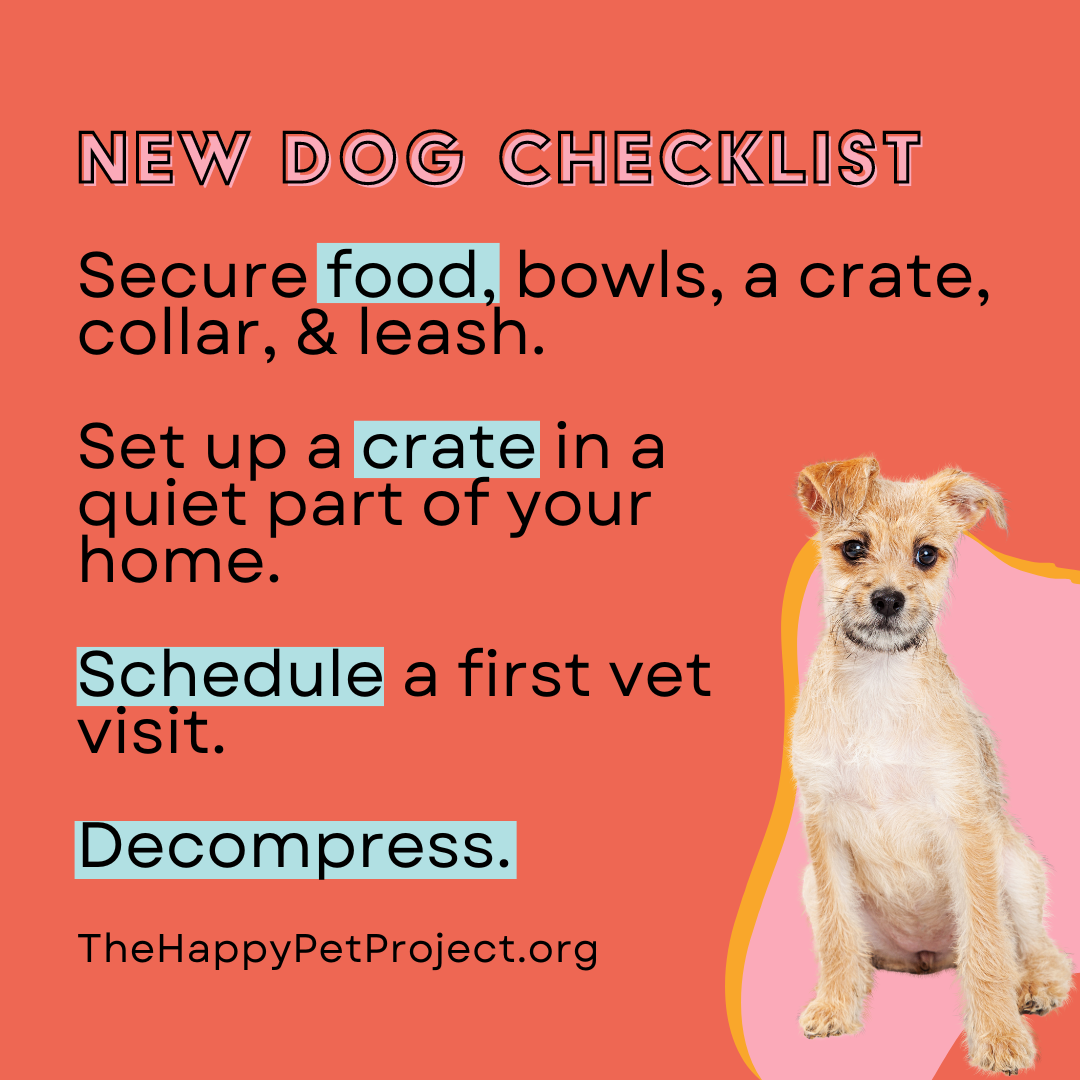|
We're so excited that you're giving a pet a loving home to call their own! Whether or not this is your first pet, keep reading to be sure you set yourself up for success as you welcome a new animal into your family. We're going to cover the items you'll need for a pet dog, and the decompression time we recommend to help make your canine comfortable. WHAT WILL A NEW PET DOG NEED? Below are some of the items you'll want to pick up prior to bringing your new pup home: 1. Food Kibble is most accessible for most pet owners. Consider combining kibble with water or broth. 2. Bowl Stainless steel often harbors less bacteria than other materials available on the market. 3. Crate Set up the crate in a quiet part of your home. A crate is especially crucial for allowing your pet to decompress during their first few months in your home, but we recommend using the crate any time you need to leave your pet unsupervised. Click here for more on crates, including how to choose the right size. 4. Collar and leash We recommend a martingale collar. We urge you to NEVER use a retractable leash, as they can promote poor leash habits and the cord can cause serious injury to you or your pet. PLANS TO MAKE WITH A NEW DOG Below are some of the plans you'll want to make after bringing your new pup home: 1. Schedule 1st Vet Visit Even for the healthiest pup, you'll need to visit a vet or a low-cost clinic for prescription Heartworm Preventatives. Skipping just 1 month of Heartworm prevention puts your pet at risk of contracting the potentially fatal Heartworm Disease. 2. Allow for "Decompression" For at least the first few weeks after bringing your new pet home, allow them to adjust to their new surroundings. We'll get into the specifics below! ALL ABOUT DECOMPRESSION
Moving into a new home can be stressful for dogs just like it is for humans. We recommend at least 7 days of decompression time to help make the adjustment as comfortable as possible! 1. No New Friends - Pets or Humans. Wait 1-2 weeks or more to make introductions. Nervous pets may express their discomfort by lashing out at pets or humans with a warning growl or a snap, leading to a bad first impression. Dogs coming from the street or a shelter may have contracted a contagious illness, so you'll want to monitor them for any symptoms prior to introducing them to any resident pets already living in the home. 2. Avoid Outings. Quiet walks and backyard hangs are full of new scents and sounds for your pet to take in! Visits to pet stores and other outings may be overstimulating during the first few weeks in a brand new home. Be especially cautious if your pup is not yet fully vaccinated. Keep them at home to keep them safe from deadly illnesses like Canine Distemper or Parvovirus. 3. Establish a Routine. A predictable routine that your dog can depend on may help them unwind. Plan a flexible schedule for feedings, exercise, lounging, and bathroom breaks. When feeding, separate pets to avoid conflicts over food. 4. Watch for Signs of Stress. When you suspect that your pet is through decompressing, continue to monitor them for signs of discomfort so you can advocate for them and prevent unwanted behaviors. Stiff body language, yawning, and lip licking are all warning signs that a dog is not comfortable and may growl or snap to warn the animal or human nearby to please back away. You may also witness a dog "shaking it off" after a tense moment with an unfamiliar person or animal. Allow them to walk away and consider placing them in their crate for quiet relaxation - not as a punishment. Do you have questions about bringing home a new pet? Leave us a comment below!
0 Comments
|
Archives
July 2023
Categories |
Texas Good Deeds Project
© Texas Good Deeds Project. EIN 87-2226038. All rights reserved.
Thank you for supporting our 100% volunteer run organization, where every dollar goes toward savings lives!
Privacy Policy
Thank you for supporting our 100% volunteer run organization, where every dollar goes toward savings lives!
Privacy Policy




 RSS Feed
RSS Feed
